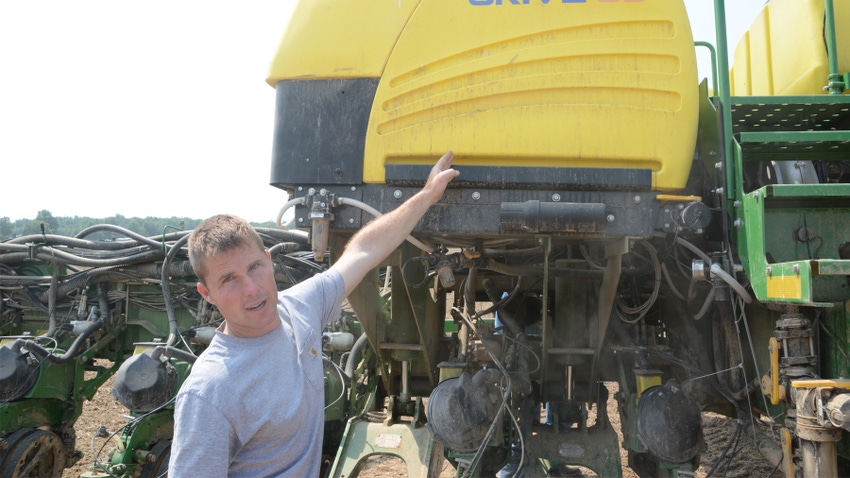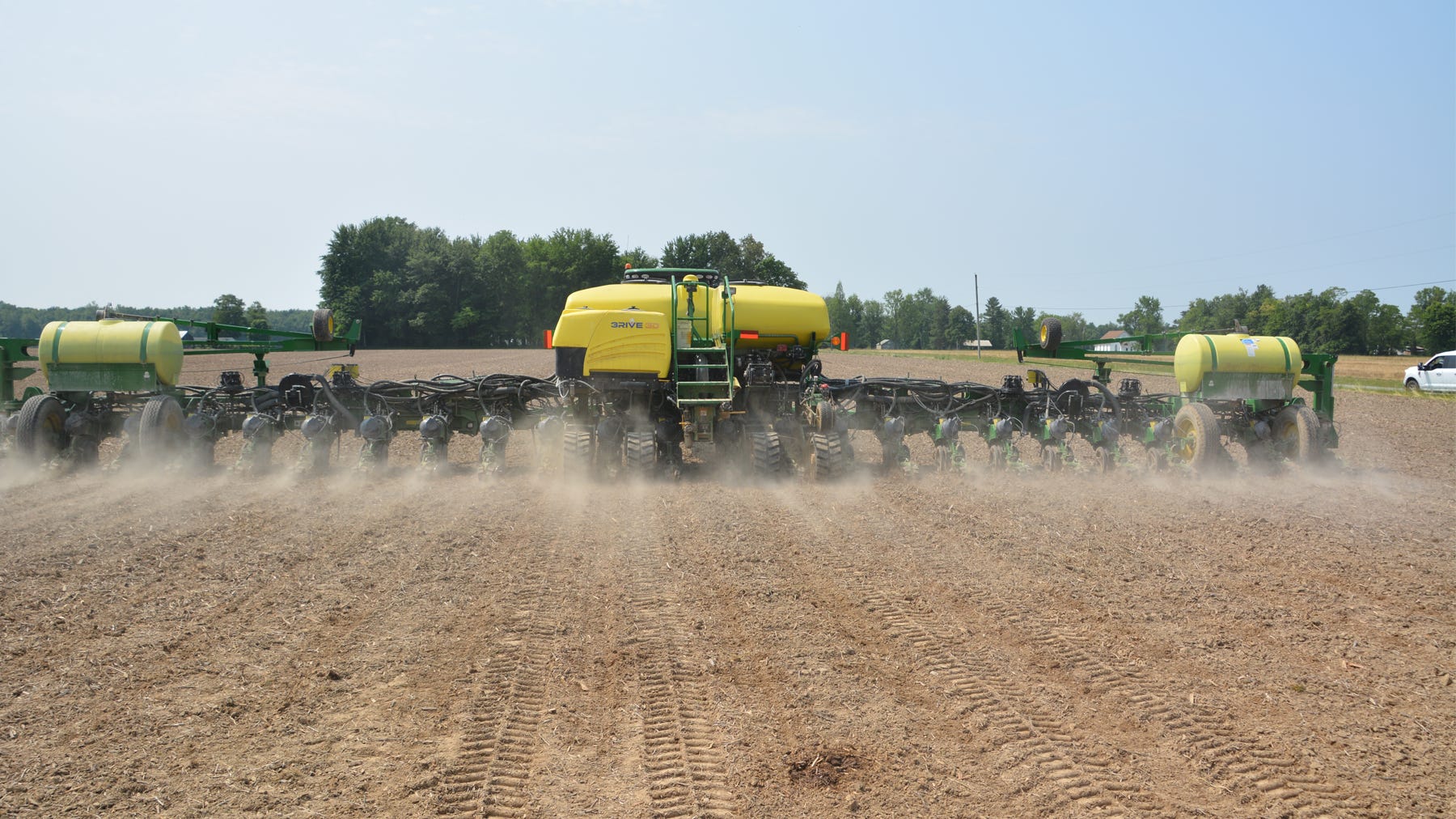
Fungicide for controlling key corn diseases typically is applied after corn pollinates. And a few people who often encounter diseases try applying the first shot of fungicide at the V10 stage in corn. But now there is a third option. Some farmers are applying fungicide with their corn planter, using a product that delivers systemic control.
FMC introduced Xyway LFR fungicide and Xyway 3D fungicide for corn a couple years ago. “I heard about Xyway 3D fungicide and was interested in trying it because we often have lots of humidity and disease issues since we farm close to the Ohio River,” says Gregory Brawner, Hanover, who farms in Jefferson County, Ind., with his dad, Greg. “We tried it on 1,400 acres in 2022.
“What we liked was that the corn seemed healthier all season long. Later, you could tell right to the row where it was applied and where it was not applied. If we keep plants healthier longer, there is a better chance that ears will fill out better during the grain fill period.”
The Brawners work with Morgan Whiteside, retail marketing manager for FMC in the area. Whiteside explained that if Xyway 3D fungicide is applied through the 3rive 3D application system developed by FMC originally to apply certain insecticide products, it can be applied in-furrow.
“If you don’t use the 3rive 3D system, Xyway LFR fungicide must be applied in a 2-inch-by-2-inch band away from the seed,” she explains. “I have customers who apply it with the 3rive 3D system, like the Brawners, and then some apply it with starter fertilizer equipment, 2 inches to the side and 2 inches below the row.”
How it works
To apply through the 3rive 3D application system, the Brawners need just one extra tank with two compartments on their corn planter. “We mounted it on the frame, so it was easy to access,” Gregory explains. “The main tank holds 120 gallons of water, and the smaller tank holds 30 gallons of product. “We applied at a rate of 11.8 ounces per acre of product, so one fill-up of product and water lets us cover about 300 acres before we need to refill it.”
The heart of the 3rive 3D application system is the foam that forms as the product is placed in the soil, Whiteside says. The foaming action is what makes it possible to apply Xyway 3D fungicide in-furrow without injury, she continues.

MINIMAL FILL-UPS: Gregory Brawner says they can plant about 300 acres before they need to refill the 3rive 3D application system with product and water.
The Brawners have not yet been challenged by tar spot where they farm. However, they are very familiar with gray leaf spot. It’s the long-standing corn disease in the Corn Belt that forms smaller, rectangular lesions on unprotected corn leaves. The lesions can be tan to brown to gray in color.
The ability of Xyway fungicides to become systemic in the plant has been verified by universities, including in work at Michigan State University in 2021. Researchers found components of the fungicide in parts of the corn plant, including leaves, later in the season, even in the reproductive stage.
“We’re eager to see how it performs this year,” Gregory concludes.
Read more about:
FungicideAbout the Author(s)
You May Also Like




